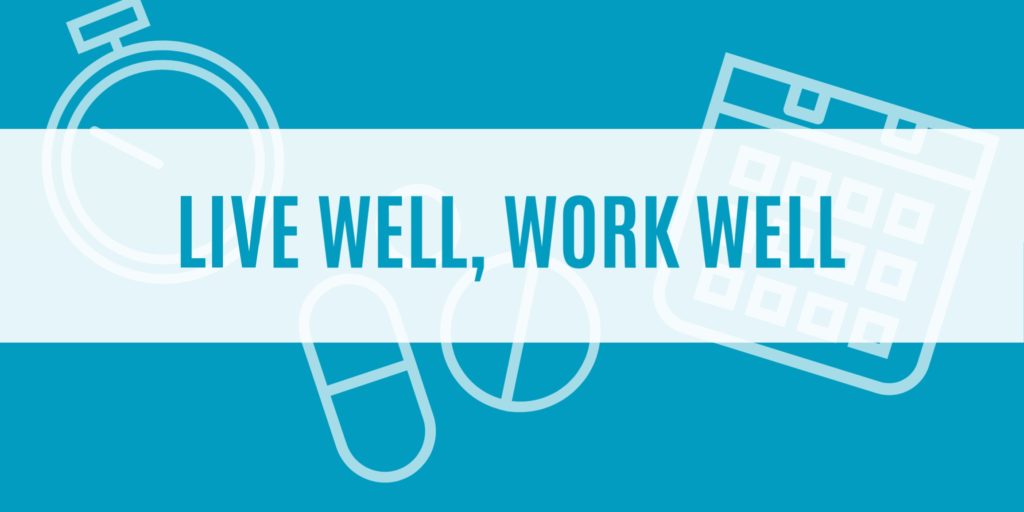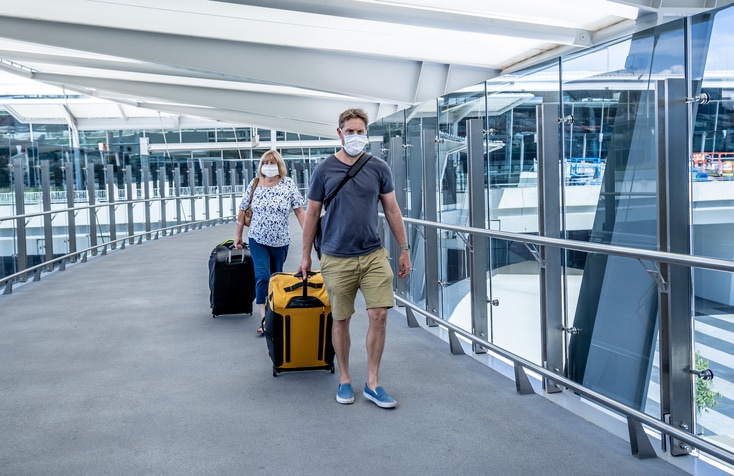
As many people in the United States begin to plan for holiday celebrations, the Centers for Disease Control and Prevention (CDC) offers the following considerations to help protect individuals and their families, friends and communities from COVID-19.
These considerations are meant to supplement—not replace—any state, local, territorial or tribal health and safety laws, rules and regulations with which holiday gatherings must comply. When planning to host a holiday celebration, you should assess current COVID-19 levels in your community to determine whether to postpone, cancel or limit the number of attendees.
Virus Spread Risk at Holiday Celebrations
While celebrating virtually or with members of your own household poses the lowest risk for spreading COVID- 19, in-person gatherings pose varying levels of risk. Event organizers and attendees should consider the risk of virus spread based on event size and use of mitigation strategies, as outlined in the CDC’s Considerations for Events and Gatherings.
There are several factors that contribute to the risk of getting infected or infecting others with the virus that causes COVID-19 at a holiday celebration. In combination, these factors will create various amounts of risk, so it is important to consider them individually
and together:
Community levels of COVID-19—Higher levels of COVID-19 cases and community spread in the gathering location, as well as where attendees are coming from, increase the risk of infection and spread among attendees. Family and friends should consider the number of COVID- 19 cases in their community and in the community where they plan to celebrate when considering whether to host or attend a holiday celebration. More information about the number of COVID-19 cases can be found on the area’s health department website.
The location of the gathering—Indoor gatherings with poor ventilation pose a higher risk for COVID-19 spread than those with good ventilation, such as venues with open windows or doors, and outdoor gatherings.
The duration of the gathering—Gatherings that last for a long period of time pose more risk than shorter gatherings.
The number of people at the gathering—Gatherings with more people pose more risk than gatherings with fewer people. The CDC does not have a limit or recommend a specific number of attendees for gatherings. The size of a holiday gathering should be determined based on the ability to reduce or limit contact between attendees; the risk of spread between attendees; and state, local, territorial or tribal health and safety laws, rules and regulations.
The locations attendees are traveling from—Gatherings with attendees who are traveling from different places pose a higher risk than gatherings with attendees who live in the same area. Higher levels of COVID-19 cases and community spread increase the risk of infection and spread among attendees.
The behaviors of attendees prior to the gathering—Gatherings with attendees who are not social distancing (staying at least 6 feet apart), wearing a mask or face covering, following hand-washing guidance and other prevention behaviors before the gathering pose more risk than gatherings with attendees who are engaging in these preventive behaviors.
The behaviors of attendees during the gathering—Gatherings with more preventive measures in place—such as mask-wearing, social distancing and hand-washing—pose less risk than gatherings where fewer or no preventive measures are being implemented.

People Who Should Not Attend In-person Celebrations
Do not host or participate in any in-person festivities if you or anyone in your household:
- Have been diagnosed with COVID-19 and have not met the criteria to be around others again
- Have symptoms of COVID-19
- Are waiting for COVID-19 viral test results
- May have been exposed to someone with COVID-19 in the last 14 days
If you are at an increased risk of severe illness from COVID-19, or live or work with someone at increased risk of severe illness, you should:
- Avoid in-person gatherings with people who do not live in your household.
- Avoid larger gatherings, and consider attending activities that pose lower risk if you decide to attend an in-person gathering with people who do not live in your household.
General Holiday Considerations for Before the Celebration
Fall and winter celebrations typically include large gatherings of families and friends, and travel that may put people at increased risk for COVID-19. Keep the following considerations in mind.
Hosting a Holiday Gathering
If you will be hosting a celebration, follow the CDC’s tips for hosting gatherings. Below are some additional considerations for hosting a holiday celebration:
• Host indoor activities, if possible. If hosting an outdoor event is not possible and you choose to host an indoor event, avoid crowded, poorly ventilated or fully enclosed indoor spaces.
• Increase ventilation by opening windows and doors to the extent that is safe and feasible based on the weather.
• Host activities with only people from your local area as much as possible.
• Limit the number of attendees.
• Provide updated information to your guests about any COVID-19 safety guidelines and prevention steps.
• Provide supplies, or encourage attendees to bring supplies, to help you and others stay healthy.
If you are planning in-person holiday gatherings with people outside of your household, consider asking all guests to strictly avoid contact with people outside of their households for 14 days before the gathering.
Traveling
Traveling increases the chance of contracting and spreading COVID-19. Staying home is the best way to protect yourself and others. If you decide to travel, follow these safety measures during your trip:

- Wear a mask to keep your nose and mouth covered when in public places.
- Avoid close contact with anyone who is not from your household.
- Wash your hands often with soap and water for at least 20 seconds, or use a hand sanitizer that contains at least 60% alcohol.
- Avoid contact with anyone who is sick.
- Avoid touching your eyes, nose and mouth.
General Holiday Considerations for During the Celebration
Keep these CDC tips in mind to reduce your risk of being exposed to, getting or spreading COVID-19 during the celebration.
Social Distance and Limit Close Contact
- Maintain a distance of at least 6 feet or more from people you don’t live with. Be mindful in areas where it may harder to keep this distance, such as restrooms and eating areas.
- Avoid using restroom facilities at high-traffic times, such as at the end of a public event.
- Avoid busy eating areas, such as restaurants during high-volume mealtimes.
- Minimize gestures that promote close contact. Instead, wave and verbally greet others.
Wear Masks or Cloth Face Coverings
- Wear a mask or cloth face covering at all times when around people who don’t live in your household.
- Avoid singing, chanting or shouting, especially when not wearing a mask and within 6 feet of others.
Limit Contact With Commonly Touched Surfaces or Shared Items
- Clean and disinfect commonly touched surfaces and any shared items between use when feasible. Use disinfectants approved by the Environmental Protection Agency.
- Use touchless garbage cans, if available. Use gloves when removing garbage bags, or handling and disposing of trash. Wash your hands after removing gloves.
Wash Your Hands
- Wash your hands often with soap and water for at least 20 seconds. If soap and water are not readily available, use an alcohol-based hand sanitizer. Cover all surfaces of your hands, and rub them together until they feel dry.
Keep Safe Around Food and Drinks
Currently, there is no evidence to suggest that handling food or eating is associated with directly spreading COVID-19. It is possible that a person can get the virus that causes COVID-19 by touching a surface or object, including food, food packaging or utensils that have the virus on it and then touching their own mouth, nose or eyes. However, this is not thought to be the main way that the virus is spread.
Remember, it’s always important to follow good hygiene to reduce the risk of illness from common foodborne germs. For example:
- Ensure or uses an alcohol-based hand sanitizer before and after preparing, serving and eating food.
- Encourage guests to bring food and drinks for themselves and for members of their own household only, instead of potluck-style gatherings.
- Limit people going in and out of the areas where food is being prepared or handled, such as in the kitchen or around the grill.
- Wear a mask while preparing or serving food to others who don’t live in your household.
- Consider having only one person serve food so multiple people aren’t handling the serving utensils.
- Use single-use options or identify one person to serve sharable items, like salad dressings, food containers, plates and utensils, and condiments.
- Avoid any self-serve food or drink options, such as buffets or buffet-style potlucks, salad bars, and condiment or drink stations.
- Wash and disinfect reusable items (e.g., seating covers, tablecloths and linen napkins) after the event.
General Holiday Considerations for After the Celebration
If you participated in high-risk activities or think that you may have been exposed during your celebration, take extra precautions for 14 days after the event to protect others:
- Stay home as much as possible.
- Avoid being around people at increased risk for severe illness from COVID-19.
- Consider getting tested for COVID-19.
If you develop symptoms consistent with COVID-19, such as fever, cough or shortness of breath, or if you test positive for COVID-19, immediately contact the host and others who attended the event or celebration that you attended. They may need to inform other attendees about their possible exposure to the disease.
Contact your health care provider and follow the CDC’s recommended steps for what to do if you become sick, and follow the public health recommendations for community-related exposure.
If you are notified that you were a close contact of someone who tested positive for COVID-19:
- Stay home for 14 days from the last time you had contact with that person.
- Monitor for symptoms of the coronavirus.
- Get information about COVID-19 testing if you feel sick.
Summary
Many traditional activities can put you at a higher risk for exposure to COVID-19. To learn more about safer, alternative ways to celebrate specific fall and winter holidays, click here.
Source: CDC
This article is for informational purposes only and is not intended as medical advice. For further information, please consult a medical professional. Design © 2020 Zywave, Inc. All rights reserved.
Most Recent Posts in COVID-19 Related Risk Management:
- OSHA Updates Mitigation and Prevention Guidance for COVID-19
- COVID-19 Delta Variant: What to Know
- OSHA Issues COVID-19 Emergency Temporary Standard for Health Care
- OSHA Updates Guidance for Mitigating and Preventing the Spread of COVID-19 in the Workplace
- OSHA Updates Recording Guidance for Adverse COVID-19 Vaccine Reactions

